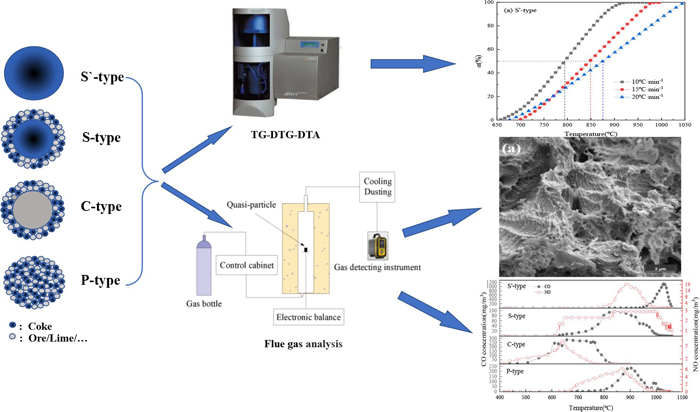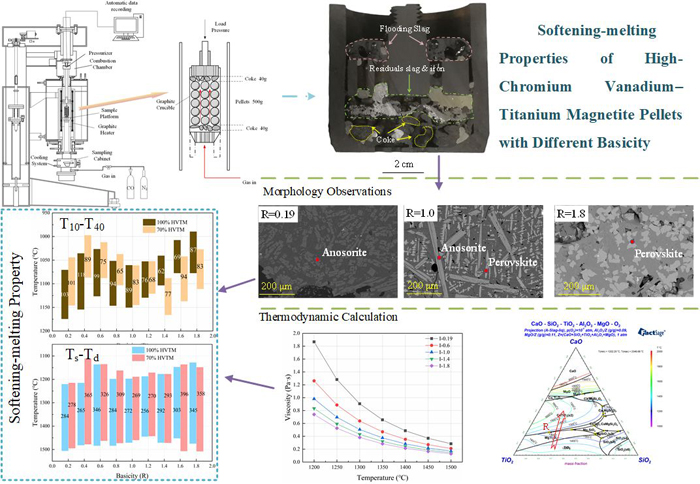63 巻, 10 号
選択された号の論文の28件中1~28を表示しています
- |<
- <
- 1
- >
- >|
Publication Data
-
2023 年 63 巻 10 号 p. Cover-
発行日: 2023/10/15
公開日: 2023/10/17
PDF形式でダウンロード (406K) -
2023 年 63 巻 10 号 p. Editorial-
発行日: 2023/10/15
公開日: 2023/10/17
PDF形式でダウンロード (635K) -
2023 年 63 巻 10 号 p. Contents-
発行日: 2023/10/15
公開日: 2023/10/17
PDF形式でダウンロード (319K)
Fundamentals of High Temperature Processes
Regular Article
-
原稿種別: Regular Article
2023 年 63 巻 10 号 p. 1567-1575
発行日: 2023/10/15
公開日: 2023/10/17
PDF形式でダウンロード (3833K) HTML形式で全画面表示
Ironmaking
Regular Article
-
原稿種別: Regular Article
2023 年 63 巻 10 号 p. 1576-1586
発行日: 2023/10/15
公開日: 2023/10/17
[早期公開] 公開日: 2023/06/19PDF形式でダウンロード (2220K) HTML形式で全画面表示 -
原稿種別: Regular Article
2023 年 63 巻 10 号 p. 1587-1594
発行日: 2023/10/15
公開日: 2023/10/17
PDF形式でダウンロード (2376K) HTML形式で全画面表示 -
原稿種別: Regular Article
2023 年 63 巻 10 号 p. 1595-1606
発行日: 2023/10/15
公開日: 2023/10/17
[早期公開] 公開日: 2023/07/13PDF形式でダウンロード (2201K) HTML形式で全画面表示 -
原稿種別: Regular Article
2023 年 63 巻 10 号 p. 1607-1618
発行日: 2023/10/15
公開日: 2023/10/17
PDF形式でダウンロード (3481K) HTML形式で全画面表示 -
原稿種別: Regular Article
2023 年 63 巻 10 号 p. 1619-1625
発行日: 2023/10/15
公開日: 2023/10/17
[早期公開] 公開日: 2023/07/21PDF形式でダウンロード (886K) HTML形式で全画面表示 -
原稿種別: Regular Article
2023 年 63 巻 10 号 p. 1626-1636
発行日: 2023/10/15
公開日: 2023/10/17
[早期公開] 公開日: 2023/07/28PDF形式でダウンロード (1551K) HTML形式で全画面表示 -
原稿種別: Regular Article
2023 年 63 巻 10 号 p. 1637-1646
発行日: 2023/10/15
公開日: 2023/10/17
PDF形式でダウンロード (1767K) HTML形式で全画面表示 -
原稿種別: Regular Article
2023 年 63 巻 10 号 p. 1647-1657
発行日: 2023/10/15
公開日: 2023/10/17
PDF形式でダウンロード (1239K) HTML形式で全画面表示
Steelmaking
Regular Article
-
原稿種別: Regular Article
2023 年 63 巻 10 号 p. 1658-1666
発行日: 2023/10/15
公開日: 2023/10/17
[早期公開] 公開日: 2023/08/10PDF形式でダウンロード (2082K) HTML形式で全画面表示 -
原稿種別: Regular Article
2023 年 63 巻 10 号 p. 1667-1676
発行日: 2023/10/15
公開日: 2023/10/17
PDF形式でダウンロード (910K) HTML形式で全画面表示 -
原稿種別: Regular Article
2023 年 63 巻 10 号 p. 1677-1686
発行日: 2023/10/15
公開日: 2023/10/17
[早期公開] 公開日: 2023/07/18PDF形式でダウンロード (2821K) HTML形式で全画面表示
Casting and Solidification
Regular Article
-
原稿種別: Regular Article
2023 年 63 巻 10 号 p. 1687-1696
発行日: 2023/10/15
公開日: 2023/10/17
PDF形式でダウンロード (1930K) HTML形式で全画面表示 -
原稿種別: Regular Article
2023 年 63 巻 10 号 p. 1697-1705
発行日: 2023/10/15
公開日: 2023/10/17
[早期公開] 公開日: 2023/06/19PDF形式でダウンロード (1787K) HTML形式で全画面表示
Instrumentation, Control and System Engineering
Regular Article
-
原稿種別: Regular Article
2023 年 63 巻 10 号 p. 1706-1713
発行日: 2023/10/15
公開日: 2023/10/17
[早期公開] 公開日: 2023/06/12PDF形式でダウンロード (2775K) HTML形式で全画面表示 -
原稿種別: Regular Article
2023 年 63 巻 10 号 p. 1714-1726
発行日: 2023/10/15
公開日: 2023/10/17
PDF形式でダウンロード (1904K) HTML形式で全画面表示 -
原稿種別: Regular Article
2023 年 63 巻 10 号 p. 1727-1737
発行日: 2023/10/15
公開日: 2023/10/17
PDF形式でダウンロード (1915K) HTML形式で全画面表示
Welding and Joining
Regular Article
-
原稿種別: Regular Article
2023 年 63 巻 10 号 p. 1738-1746
発行日: 2023/10/15
公開日: 2023/10/17
[早期公開] 公開日: 2023/06/16PDF形式でダウンロード (1335K) HTML形式で全画面表示 -
原稿種別: Regular Article
2023 年 63 巻 10 号 p. 1747-1757
発行日: 2023/10/15
公開日: 2023/10/17
[早期公開] 公開日: 2023/06/30PDF形式でダウンロード (2448K) HTML形式で全画面表示 -
原稿種別: Regular Article
2023 年 63 巻 10 号 p. 1758-1768
発行日: 2023/10/15
公開日: 2023/10/17
PDF形式でダウンロード (7465K) HTML形式で全画面表示
Surface Treatment and Corrosion
Regular Article
-
原稿種別: Regular Article
2023 年 63 巻 10 号 p. 1769-1773
発行日: 2023/10/15
公開日: 2023/10/17
PDF形式でダウンロード (1997K) HTML形式で全画面表示
Mechanical Properties
Regular Article
-
原稿種別: Regular Article
2023 年 63 巻 10 号 p. 1774-1785
発行日: 2023/10/15
公開日: 2023/10/17
[早期公開] 公開日: 2023/07/17PDF形式でダウンロード (3493K) HTML形式で全画面表示 -
原稿種別: Regular Article
2023 年 63 巻 10 号 p. 1786-1797
発行日: 2023/10/15
公開日: 2023/10/17
PDF形式でダウンロード (1303K) HTML形式で全画面表示
Fundamentals of High Temperature Processes
Note
-
原稿種別: Note
2023 年 63 巻 10 号 p. 1798-1801
発行日: 2023/10/15
公開日: 2023/10/17
PDF形式でダウンロード (735K) HTML形式で全画面表示
Erratum
-
原稿種別: Erratum
2023 年 63 巻 10 号 p. 1802
発行日: 2023/10/15
公開日: 2023/10/17
PDF形式でダウンロード (134K)
- |<
- <
- 1
- >
- >|
























